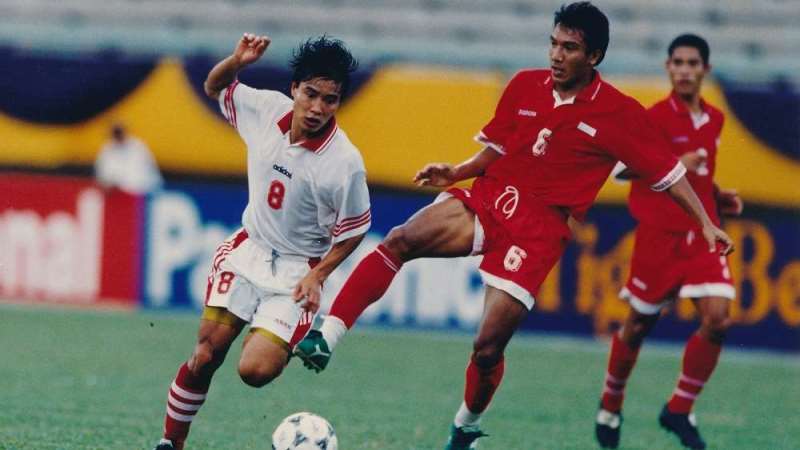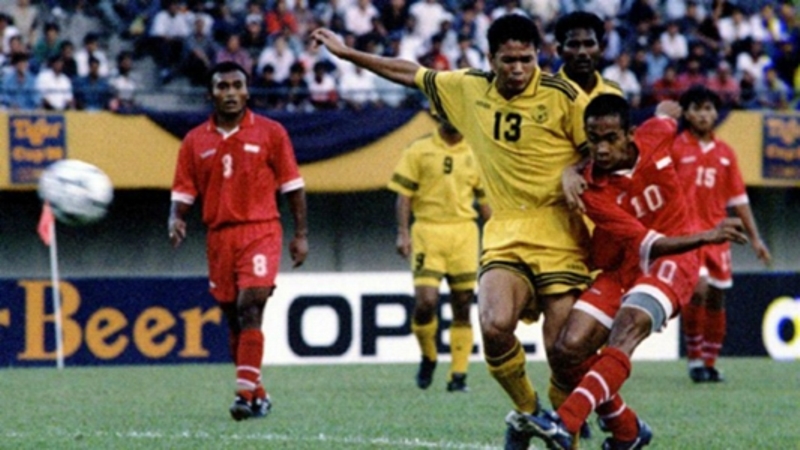 Few would know then that with the creation of the ASEAN Championship – or the Tiger Cup as the inaugural edition was known as – football in the region would change forever.
Few would know then that with the creation of the ASEAN Championship – or the Tiger Cup as the inaugural edition was known as – football in the region would change forever.
The founding fathers had a vision that for football in ASEAN to grow, it will need a more centralised championship instead of those that were held on a smaller basis in each country and with just a few invited teams taking part.
With ten teams in ASEAN then and with the huge population backing it, it was about time that football in the region takes the next bold step forward.
The competitive nature between countries in ASEAN had always been there what with the biennial SEA Games in between the King’s Cup, the Merdeka Tournament and the Jakarta Anniversary Tournament, just to name a few.
But with the Tiger Cup, it would provide the impetus to change the whole footballing landscape in ASEAN.
The first edition of the Tiger Cup was held in 1996 in Singapore.
The 55,000 capacity National Stadium was the main venue while the Jurong Stadium with a capacity of 6,000 was the secondary facility.
A total of ten teams took part in the tournament and where they were divided into two groups.
GROUP A – Indonesia, Vietnam, Myanmar, Laos and Cambodia
From the onset, the level of competition was already at quite a high level as these players would have had played against each other consistently at the SEA Games level which was then opened to full national teams.
A still young Le Huynh Duc was on his way to his peak as was Kurniawan Dwi Yulianto for Indonesia and Maung Maung Oo for Myanmar.
Laotian goalkeeper Soulivanh Xuenvilay was nearing the end of his career as he tried to guide a handful of youngsters while Cambodia had the effervescent Hok Sochetra making a name for himself.
Vietnam made a strong impression the year before at the SEA Games 1995 in Chiangmai but Indonesia were motivated.
And a 1-1 draw between the two ensured Indonesia and Vietnam’s passage to the next round as group winners and runners-up respectively.
GROUP B – Thailand, Malaysia, Singapore, Brunei and the Philippines
Coming in as the defending SEA Games champions gave Thailand a heap of confidence and that made the difference with a flurry of names like Kiatisak Senamuang and the lanky Woorawot Srimaka among others.
The Malaysians were relying on veterans like Zainal Abidin Hassan and Dollah Salleh as did Singapore with Fandi Ahmad and David Lee almost at the end of their career.
Brunei were struggling with Irwan Mohamad the lone goal poacher while Philippines captain Maxie Abad had a hard time keeping pace with the heavyweights.
With Thailand the runaway leaders in the group, it was to be hosts Singapore and Malaysia who would be fighting for a place in the next round.
Malaysia’s drawn games against both Thailand and Singapore would give them the edge as they finished the group on second.

After an unimpressive run in the group stage, the Malaysians served a surprise on Indonesia to make the final while Thailand were just unstoppable as they coast past a resilient Vietnam side.
In the final, it took just one mistake and striker Kiatisak Senamuang delivered the all-important goal and the winner just nine minutes into the game.
It gave Thailand the first-ever crown in the newly-created championship.
With 32,000 in attendance in the final and the 20,000 in the semifinals, the Tiger Cup 1996 was a resounding success.
Unlike the SEA Games which is a multi-sport event, the Tiger Cup stand-alone championship has all the markings of being a great event.
And it has. It has become the ASEAN World Cup which is eagerly anticipated by fans from across the region.
 ROLL OF HONOUR
ROLL OF HONOUR
CHAMPIONS: Thailand
RUNNERS-UP: Malaysia
THIRD: Vietnam
FOURTH: Indonesia































